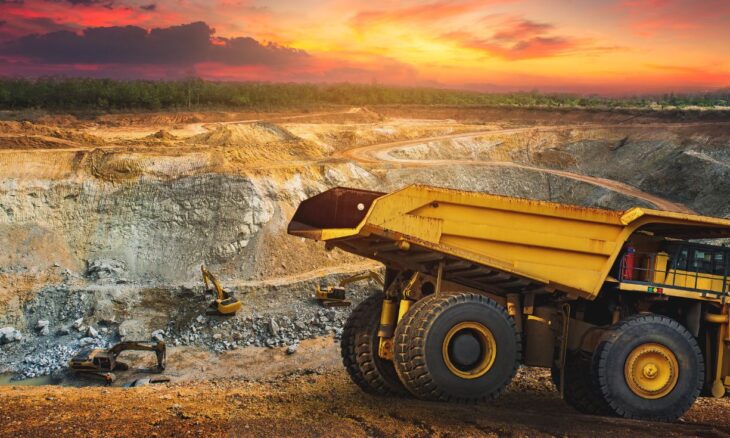
Last Updated on March 16, 2024 by Surender Kumar
Mining stands as one of humanity’s oldest industries, dating back thousands of years to the dawn of civilization. From ancient civilizations extracting metals for tools and jewelry to the modern-day operations fueling global economies, mining has evolved significantly.
However, amidst this evolution, certain core principles remain timeless—the essentials of mining that underpin its operations and shape its future.
Table of Contents
Unveiling the Foundations of Mining
At its core, mining involves extracting valuable minerals or other geological materials from the earth’s crust. Whether it’s coal, gold, diamonds, or rare earth elements, the process of extracting these resources involves a series of essential steps and considerations.
Let’s delve into these foundational aspects:
1. Exploration: Mapping the Terrain
Before a shovel ever breaks ground, thorough exploration is essential. This phase involves geologists and mining engineers surveying potential sites to determine the presence and distribution of valuable resources. Techniques such as geological mapping, satellite imaging, and geophysical surveys aid in identifying promising locations for further investigation.
2. Resource Assessment: Estimating the Value
Once a promising deposit is identified, thorough evaluations are undertaken to gauge its dimensions, quality, and economic feasibility. This phase encompasses sampling the ore body by drilling and examining core samples. Utilizing advanced modeling methods, the quantity and caliber of the resource are estimated, aiding in determining whether to advance with development. Additionally, acquiring appropriate equipment from reputable equipment manufacturers becomes crucial at this juncture to facilitate efficient extraction and processing operations.
3. Planning and Permitting: Navigating Regulations
Mining operations are subject to a myriad of environmental, safety, and regulatory requirements. Securing permits and approvals from government agencies is a critical step in the process. Engineers and environmental specialists collaborate to develop comprehensive plans that address issues such as water management, land reclamation, and community engagement.
4. Extraction: From Blasting to Hauling
With permits in hand, the extraction phase begins in earnest. Depending on the deposit’s characteristics, various methods may be employed, including surface mining, underground mining, and in-situ leaching.
Surface mining involves removing overburden to expose the ore body, while underground mining accesses deposits buried deep beneath the surface. Techniques such as drilling, blasting, and hauling are utilized to extract and transport the ore to the processing facility.
5. Processing: Refining the Raw Material
Once extracted, the raw ore undergoes processing to extract the desired minerals and remove impurities. This often involves crushing, grinding, and chemical processing to separate the valuable minerals from the gangue.
Techniques such as flotation, gravity separation, and smelting are employed depending on the mineralogy of the deposit.
6. Environmental Stewardship: Minimizing Impact
Mining operations can have significant environmental impacts, including habitat disruption, water pollution, and greenhouse gas emissions. As such, environmental stewardship is an essential aspect of modern mining.
Companies invest in technologies and practices to minimize their footprint, such as reclamation of disturbed land, water recycling, and adopting renewable energy sources.
7. Safety and Health: Protecting the Workforce
Mining is inherently hazardous, with risks ranging from cave-ins and explosions to exposure to harmful chemicals and dust. Ensuring the safety and health of the workforce is paramount. Strict safety protocols, training programs, and monitoring systems are implemented to mitigate risks and prevent accidents.
Furthermore, ongoing research and innovation drive improvements in equipment design and safety practices.
8. Community Engagement: Building Relationships
Mining operations often occur near communities, necessitating proactive engagement and dialogue. Companies strive to be good neighbors, consulting with stakeholders, addressing concerns, and contributing to local development initiatives.
Building trust and fostering mutually beneficial relationships is essential for the long-term sustainability of mining projects.
Looking Ahead: Innovations and Challenges
As we look to the future, the mining industry faces both opportunities and challenges. Advances in technology, such as automation, data analytics, and robotics, promise to increase efficiency and safety. However, environmental and social pressures, along with resource depletion and geopolitical tensions, pose significant challenges.
In Conclusion
Mining is a complex and multifaceted industry, driven by a blend of science, technology, and human ingenuity. From exploration to extraction, processing, and beyond, the essentials of mining guide operations and shape their outcomes.
By embracing innovation, practicing responsible stewardship, and engaging with communities, the mining industry can continue to meet the world’s growing demand for essential resources while safeguarding the planet for future generations.

I am a passionate blogger having 10 years of experience in blogging and digital marketing. I started List Absolute in 2018 to give my passion a live platform. I have also a good hand in writing unique and quality content. Here I contribute in my free time. Thanks for reading. Let me know if I can help you get your work done in a timely manner.
